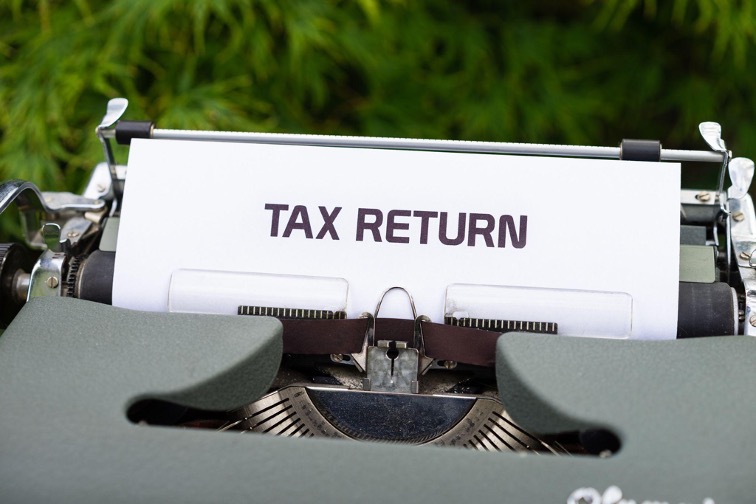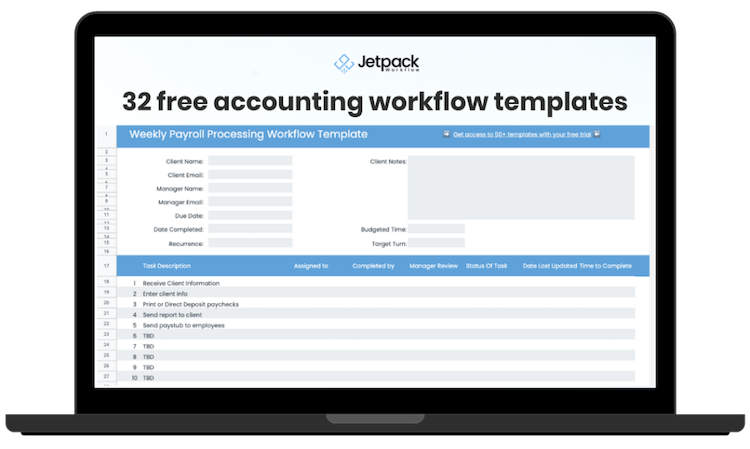A Complete Tax Return Checklist to Send to Your Clients

Though each client’s financial situation is unique, there are several common items you’ll need from each of them to prepare a tax return.
Rather than starting from scratch each time, you can use a checklist that covers most situations. Below is a template you can customize for your own practice.
A Tax Return Checklist to Send to Your Clients
This tax return checklist is appropriate for a federal tax return. You should also consider adding state-specific questions. Note that the list below covers the most common items but won’t address every situation.
You can also access the checklist here (note: view only – make a copy or download to edit this document).
Dear Client,
We are very excited to be preparing your tax return this year. In order to smooth the data collection process, we have created a checklist of information we will need to complete your return. Please note that not all items will apply to everyone.
We will need to receive your documentation by April 1st in order to complete your return by April 15th. If we receive your information after this date, we will file an extension for your return and reach out to you after the April 15th deadline to complete the return.
If you have any questions, please contact me by email or phone.
Best,
ABC Accounting
- Personal information:
- Full names of the taxpayers
- Dates of birth
- Social security numbers
- Address
- Dependent information:
- Names
- Dates of birth
- Social security numbers
- Relationship
- Whether the taxpayer has full custody of the children or if they split custody
- Income:
- Wages (W-2s)
- Investment income:
- Interest income (1099-Int)
- Dividend income (1099-Div)
- Capital gains (1099-B)
- Reports for any cryptocurrency transactions
- Business income and expenses (for sole proprietors)
- Revenue
- Copies of any 1099-NEC received
- Total for income not included on 1099-NECs
- Expenses:
- Automobile expenses
- Office supplies
- Phone expenses
- Interest expenses
- Equipment
- Legal and professional fees
- Business meals and entertainment
- Dues and subscriptions
- Continuing education
- Travel expenses
- Other business expenses
- Revenue
- Retirement income:
- Pension income
- IRA distributions
- Social security income
- Income and expenses for any rental properties
- State tax refunds received
- Unemployment compensation received (1099-G)
- Alimony received (for divorces finalized prior to 12/31/2018)
- Income from pass-through entities
- K-1s from partnerships and s-corporations
- Dividend income from c-corporations
- Adjustments to income:
- Health insurance paid for self-employed individuals
- Student loan interest
- Educator expenses for teachers
- Deductions:
- Medical expenses (if they will exceed 7.5% of the taxpayer’s income)
- State taxes paid or sales tax paid in states without state income taxes
- Property taxes paid
- Personal property taxes, such as DMV fees based on a vehicle’s value
- Mortgage interest
- Mortgage balances if the mortgage balances are in excess of $750,000
- Investment interest paid
- Cash donations
- Non-cash donations
- Receipts are required if the total deposit is over $500
- Vehicle donations require a 1098-C from the charity that received the vehicle
- Items valued at more than $5,000 require an appraisal which must be submitted with the return
- Documentation for potential credits:
- Invoices for solar panels
- Purchase agreements for electric vehicles
- Education expenses for higher education (1098-T)
- Foreign taxes paid (often listed on 1099-Div)
- Estimated tax payments (ask for a list of all payments made throughout the year along with dates)
- Other information needed to prepare and file the return:
- Copy of the prior year’s tax return (to look for carryforwards)
- Email addresses (if using electronic signatures)
- Phone numbers
- Bank information if scheduling direct deposit of refunds or electronic payments of the taxes due
- Documentation of health insurance coverage
- Copies of any notices received from any taxing authorities
- Personal identity theft prevention number from the IRS (if applicable)

When Should You Send Clients This Checklist?
As the tax season approaches, many accountants begin to wonder when they should ask their clients for their tax information. While there is no hard and fast rule, it is generally advisable to start collecting tax documents from clients at least a month before the tax return is due.
This gives accountants enough time to review the information and ensure everything is in order. It also allows them to catch any errors or discrepancies that may have been made on the tax forms.
Asking for tax information too late can often lead to rushed work and errors on the return. By starting the process early, accountants can help ensure that their client’s tax returns are accurate and filed on time.
Some accountants choose to send the checklist in early January. Doing so allows clients to have the checklist in hand as they receive documents in January.
What Other Information Should You Send with the Checklist?
When sending a checklist to your clients, you should also include several other pieces of information. You should let the clients know how you plan to accept their documentation – whether by mail, in person, or digitally. If your clients are submitting their information digitally, you should ensure you have a secure method of accepting and storing their files.
The checklist should also include your deadlines for accepting information and meeting the tax filing deadlines. Most accountants set a cutoff date of April 1st for receiving the client’s paperwork and completing the return by April 15th.
BONUS: Simplify Your Accounting Workflows with This Free Resource
If you’re looking for simple workflow templates, which includes several checklist for tax workflows, access our collection of 32 customizable accounting workflow templates. This free resource includes a ton of the most popular accounting templates including monthly bookkeeping, weekly accounting analysis, client onboarding procedures, and common tax return forms.






